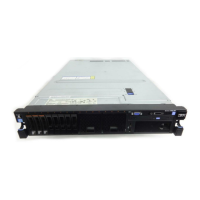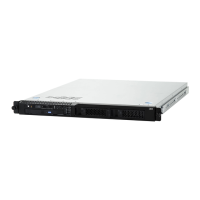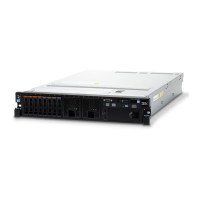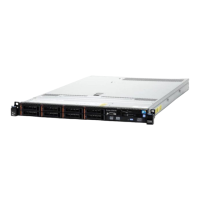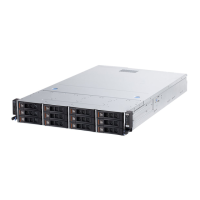Table 4. System board jumpers
Jumper number Jumper name Jumper setting
JP1 Clear CMOS jumper
v Pins 1 and 2: Keep CMOS
data (default).
v Pins 2 and 3: Clear CMOS
data.
JP2 BIOS boot backup (boot
block jumper)
v Pins 1 and 2: Boot from
primary BIOS page
(default).
v Pins 2 and 3: Boot from
backup BIOS page.
JP8 ME recovery jumper
v Pins 1 and 2: Normal
(default).
v Pins 2 and 3: Activate ME
recovery.
JP9 ME flash override jumper
v Pins 1 and 2: Normal
(default).
v Pins 2 and 3: Override ME
flash.
JP10 TPM physical presence
jumper
v Pins 1 and 2: Normal
(default).
v Pins 2 and 3: Pull down
TPM.
JP11 TPM initialization jumper
v Pins 1 and 2: Normal
(default).
v Pins 2 and 3: Initiate TPM.
JP12 IMM SPI half ROM enable
v Pins 1 and 2: Disabled.
v Pins 2 and 3: Enable IMM
SPI half ROM (default).
JP22 Low security_N jumper
v Pins 1 and 2: Normal
(default).
v Pins 2 and 3: Activate low
security.
Notes:
1. If no jumper is present, the server responds as default.
2. Changing the position of the boot block jumper from pins 1 and 2 to pins 2 and 3 for 5
seconds before the server is turned on alters which flash ROM page is loaded. Do not
change the jumper pin position after the server is turned on. This can cause an
unpredictable problem.
3. If a message is shown indicating that your Trusted Platform Module's (TPM) physical
presence is asserted, it is an indication that the system is vulnerable to potential security
risks. This occurs when the jumper setting of JP11 is at Pins 2 and 3. Switching the
jumper setting to Pins 1 and 2 of JP11 will deassert the Trusted Platform Module's
(TPM) physical presence.
Important:
1. Before you change any switch settings or move any jumpers, turn off the server;
then, disconnect all power cords and external cables. Review the information in
20 IBM System x3100 M4 Type 2582: Problem Determination and Service Guide

